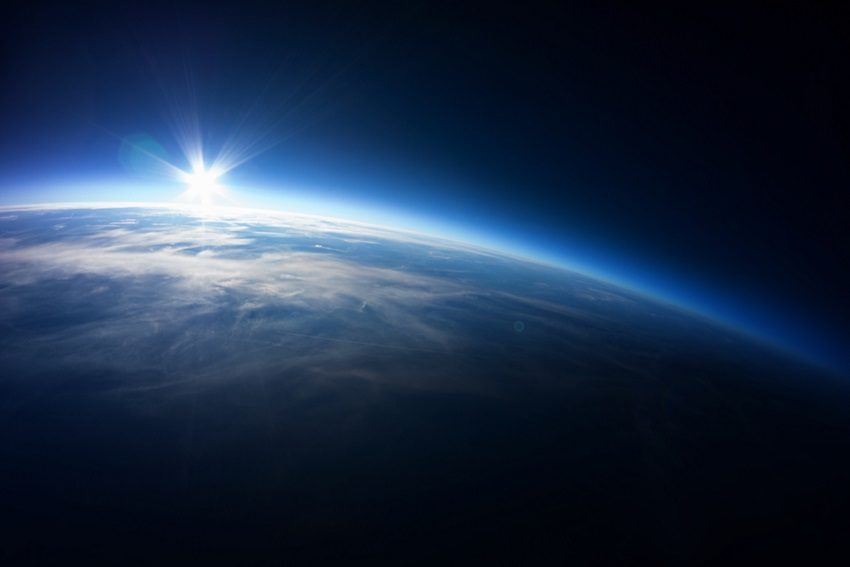Commercial space travel and us

Returning to his hometown for the Adelaide Festival of Ideas, anaesthetist Dr Thomas Smith writes about the challenges of getting flight-fit for future aerospace travel as everyday citizens will soon be travelling commercially beyond the threshold of space.
There are people alive today who were born before the Wright brothers’ first flight in 1903 — the entire history of powered aviation and space flight has happened within a human lifespan. In that time air travel has transformed the world, and space travel will be next.
More than 100 billion people have lived on Earth but only 558 have been to space. Selection is highly competitive and astronauts must meet strict standards for fitness and health. All of this is about to change with the imminent dawn of commercial suborbital space flight.
Members of the public will soon be travelling beyond the threshold of space through companies such as Blue Origin and Virgin Galactic. They will fly a short up-and-down suborbital trajectory providing several minutes of weightlessness, as Alan Shepard did in 1961 when he became the first American in space and an instant national hero.
Blue Origin’s ‘New Shepard’ uses a reusable rocket to launch an autonomous crew capsule into space that then returns to Earth for a parachute landing. New Shepard has made several unmanned test flights to space and Blue Origin, owned by Amazon billionaire Jeff Bezos, expects to be flying paying customers to space within a year.
Virgin Galactic was founded by billionaire Sir Richard Branson. Their ‘SpaceShipTwo’ is a spaceplane flown by two pilot-astronauts that drop-launches from a carrier aircraft before rocketing into space and then gliding back to Earth for a runway landing. It is undergoing powered test flights that are expected to reach space within a year, with commercial flights to follow.
As in the early days of commercial air travel, it will be some time before flights become affordable for most of the population. Virgin Galactic tickets cost US$250,000 while Blue Origin is yet to release prices. For now, unlike for professional astronauts, selection has been described as ‘wealth-based rather than health-based’.

Hundreds of people have already purchased flights, including many who are elderly (some aged in their 90s) or have significant medical problems, or both. They will face new and different physiological challenges compared with healthy professional astronauts in orbital spaceflight, and my current research is investigating how the human body will respond and whether this matters medically.
For example, the acceleration forces associated with suborbital launch and re-entry are expected to reach 4–6 Gs, higher in magnitude than for NASA’s now-retired Space Shuttle. Imagine every part of your body temporarily weighing four, five or six times more than normal. High-G suborbital profiles can be simulated using a human centrifuge, and people of varying ages and with stable or minor medical conditions have tolerated this, although at their peak these G-forces are sufficiently extreme to make it difficult to move or even breathe.
Our understanding of suborbital physiology is very limited — there have only ever been eight suborbital human space flights, with only three since 1975. While it is likely to be generally safe, our research team is seeing quite dramatic effects on the centrifuge that will have significant clinical implications for some prospective passengers, including those with underlying heart or lung conditions. Doctors are already familiar with the concept of optimising fitness to fly for airline passengers, and we must likewise learn to understand and overcome these new challenges and enable as many people as possible to fly.
Eventually this will include all of us, as the ultimate objective of suborbital space travel is incredibly fast point-to-point travel around the globe. Imagine flying from Adelaide to London in two hours.
Other countries are preparing to harness the economic benefits promised by commercial suborbital spaceflight. In the UK, the British government is developing a spaceport with the stated aim of becoming the European centre of suborbital spaceflight. With Australia’s famous ‘tyranny of distance’, commercial space travel is going to be all the more important and closely aligns with the industry-focused remit of the new Australian Space Agency.

Suborbital flights are also well suited to fundamental scientific research, including human experiments that will cost vastly less than anything possible with traditional government space programs. Space medicine is listed among the Australian Space Agency’s initial strategic priorities for research and development, and the new suborbital frontier is an essential part of this. Australia is ideally placed to explore suborbital science and medicine and integrate this with existing national strengths such as the related field of aeromedical critical care. Here Australia’s international excellence is illustrated by the $25 million state-of-the-art aeromedical precinct at Adelaide Airport that brings together two world-class organisations, the Royal Flying Doctor Service and MedSTAR emergency medical retrieval service, with whom I am privileged to have worked.
As an anaesthetist, my clinical practice is concerned with keeping people alive and well in the face of serious physiological insults such as trauma and surgery. This frequently involves evaluating how well a patient will withstand major surgery in the context of their age, level of fitness and baseline health. How will their organ systems cope? What can we do to get them through this safely? Many of the same principles apply to sending everyday citizens into space, which will soon be commonplace, and doctors will be making decisions based on the results of research like ours.
Australia and South Australia have an opportunity to embrace this future where, surely within another human lifespan, we will think no more of flying via space than we do of catching a plane.
Dr Thomas Smith is Head of Aerospace Physiology and Consultant Anaesthetist at King’s College London. He leads a master’s program in space physiology in collaboration with the European Space Agency’s European Astronaut Centre.
Thomas Smith
Adelaide Festival of Ideas
Sunday, July 15, 9.30am
adelaidefestivalofideas.com.au